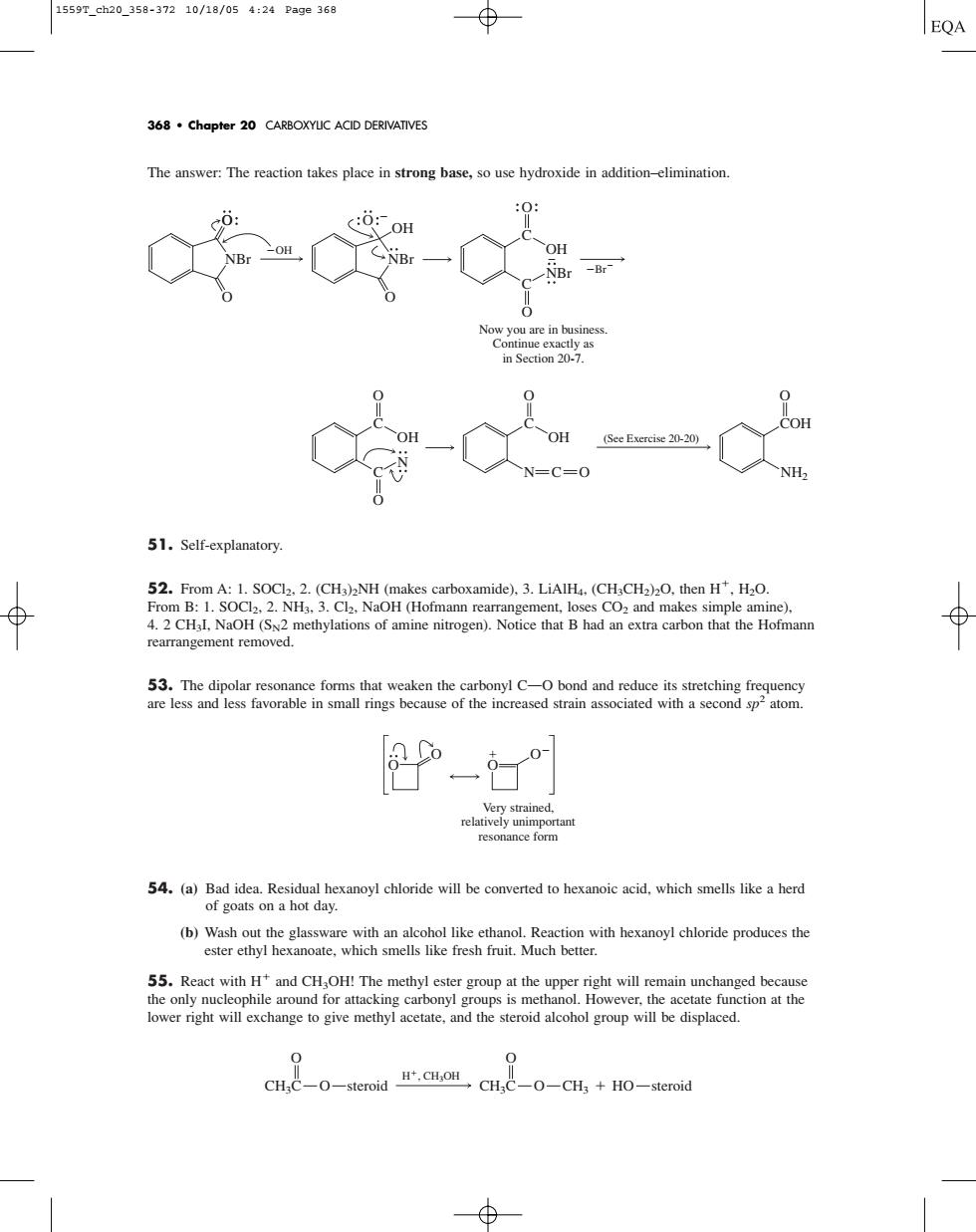正在加载图片...

1559rch20358-37210/18/054:24Page368 EQA 368.chapter 20 CARBOXYUC ACID DERIVATIVES The answer.The reaction takes place in strong base,souse hydroxide in addition-elimination :6:OH OH NB -Br Now you are in busi in Section 20-7. (See Exercise 20-20) 51.Self-explanatory. mthyations of amine rogen)Noie athad anon that the Hom rearrangement remoy use of the in 54.(a)Bad idea.Residual hexanoyl chloride will be converted to hexanoic acid.which smells like a herd of goats on a hot day. CH.c-o-steroid,C-O-CH+HO-stcroidThe answer: The reaction takes place in strong base, so use hydroxide in addition–elimination. 51. Self-explanatory. 52. From A: 1. SOCl2, 2. (CH3)2NH (makes carboxamide), 3. LiAlH4, (CH3CH2)2O, then H, H2O. From B: 1. SOCl2, 2. NH3, 3. Cl2, NaOH (Hofmann rearrangement, loses CO2 and makes simple amine), 4. 2 CH3I, NaOH (SN2 methylations of amine nitrogen). Notice that B had an extra carbon that the Hofmann rearrangement removed. 53. The dipolar resonance forms that weaken the carbonyl COO bond and reduce its stretching frequency are less and less favorable in small rings because of the increased strain associated with a second sp2 atom. 54. (a) Bad idea. Residual hexanoyl chloride will be converted to hexanoic acid, which smells like a herd of goats on a hot day. (b) Wash out the glassware with an alcohol like ethanol. Reaction with hexanoyl chloride produces the ester ethyl hexanoate, which smells like fresh fruit. Much better. 55. React with H and CH3OH! The methyl ester group at the upper right will remain unchanged because the only nucleophile around for attacking carbonyl groups is methanol. However, the acetate function at the lower right will exchange to give methyl acetate, and the steroid alcohol group will be displaced. H, CH3OH CH3C O O steroid CH3C CH3 O O HO steroid O O Very strained, relatively unimportant resonance form O O (See Exercise 20-20) C C O O OH N C N O O OH C COH NH2 O O O NBr NBr O OH OH O C C O O Now you are in business. Continue exactly as in Section 20-7. OH Br NBr O 368 • Chapter 20 CARBOXYLIC ACID DERIVATIVES 1559T_ch20_358-372 10/18/05 4:24 Page 368